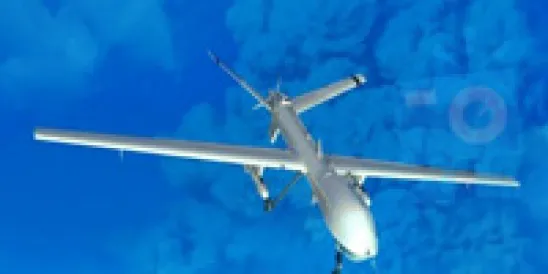As we recently reported, the US Federal Aviation Administration (FAA) has granted CNN permission to use drones under the terms of a research agreement that will study how drones can be used safely and effectively by news organizations. Drones or unmanned aircraft systems (UAS) have also been used for journalism in Africa; one of several uses discussed in a post published on CovAfrica last year. That post also discussed the regulatory difficulties surrounding the use of private or commercial UAS in Africa, including the fact that the South African Civil Aviation Authority (SACAA) had announced a “clampdown” on civilian UAS.
SACAA subsequently announced that it would have suitable regulations in place by the end of March 2015, a deadline it claims to be on track to meet. The proposed regulations were initially criticised by the industry, with Hennie Kieser, director and chairman of the Commercial Unmanned Aircraft Association of South Africa, accusing SACAA of proposing “unfeasible possibilities”, such as requiring UAS operators to have commercial pilot licenses. Kieser also suggested that UAS should be classified by kinetic energy rather than size and weight (as in the US), due to there being hundreds of different types of UAS of all different sizes. It had also been suggested that the use of UAS should be restricted to the daytime, although this also led to concerns from the industry who argued that certain mining, anti-poaching and crime prevention operations need to be conducted at night.
SACAA published draft regulations (as a proposed amendment of the Civil Aviation Regulations, 2011) in December 2014. Although stakeholders were still able to comment on the draft up until 5 January 2015, it is clear that SACAA had taken the initial concerns of the industry into account. Key provisions include:
-
Operators of UAS will need a specialist Remote Pilot License, rather than a commercial pilot license.
-
UAS are classified by kinetic energy, as well as height and weight.
-
Special permission can also be obtained from the SACAA for night operations, operations in the vicinity of people, property, structures and buildings, and public roads.
-
Flights beyond the visual line of sight are also possible in certain circumstances.
If SACAA meets its deadline of having these regulations in place within the next few months, it will be a forerunner among aviation authorities, not just in Africa but around the world. Although many states have piecemeal rules allowing the use of UAS for certain activities (such as the FAA’s aforementioned grant of permission to CNN) or may allow the unregulated use of UAS, very few appear to have adopted similarly wide-ranging regulations. In the US, recent reports suggest that the FAA won’t have regulations in place until 2017. Reports also suggest that the regulations will be strict, requiring a private pilot licence and restricting flights outside the pilot’s line of sight; proposals that have not been positively received.As noted above, the current draft of SACAA’s proposed regulations appears to be more flexible. It is clear that the need to balance the opposing forces of safety and over-regulation is something that aviation authorities around the world are struggling to deal with. Their eyes will be on South Africa as it looks to implement its UAS regulations — time will tell how effective they will be.




 />i
/>i
